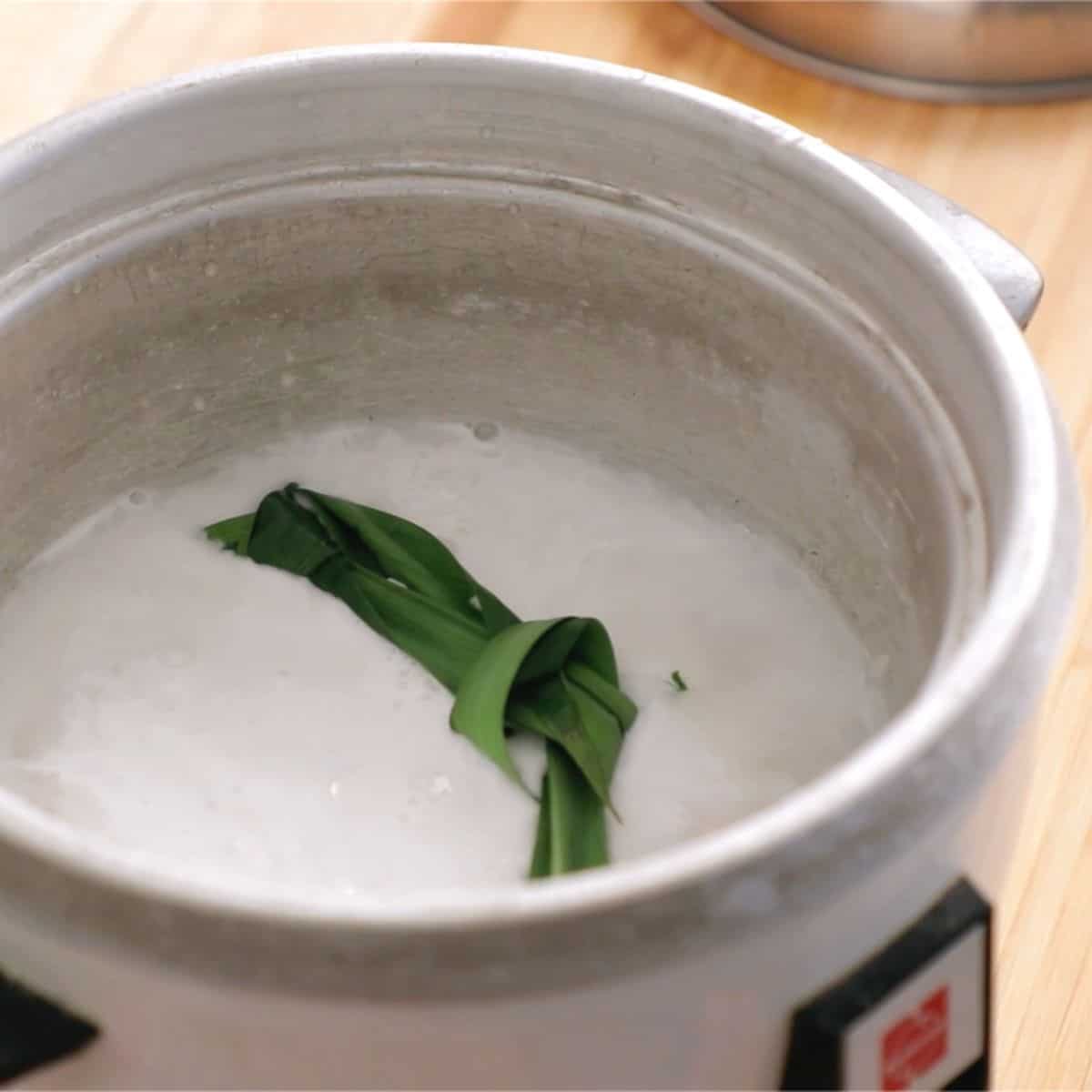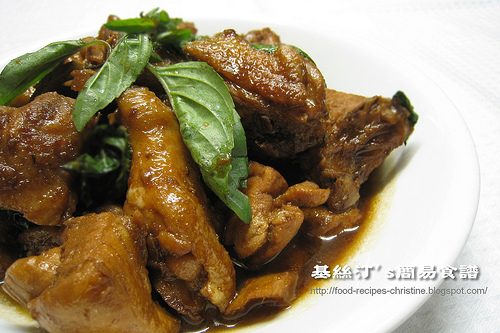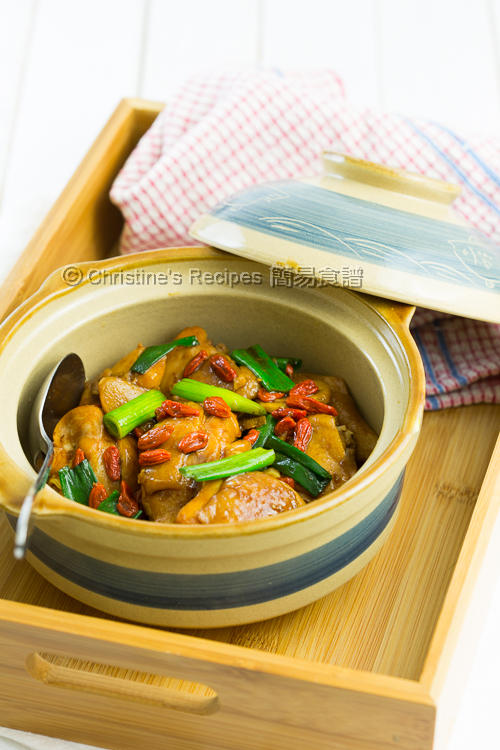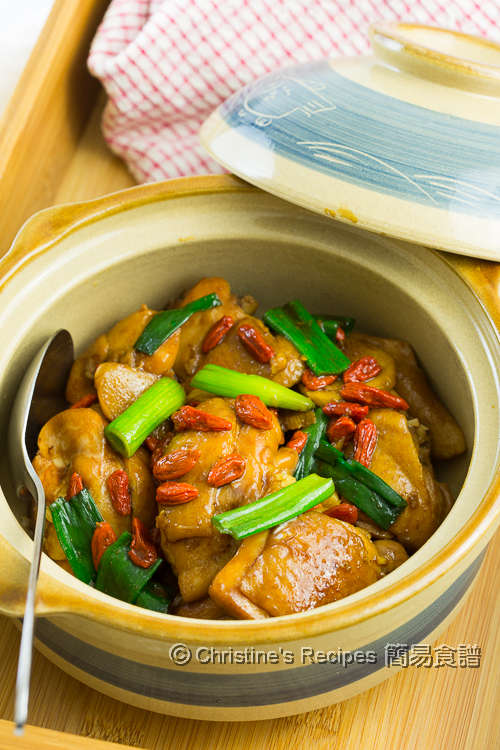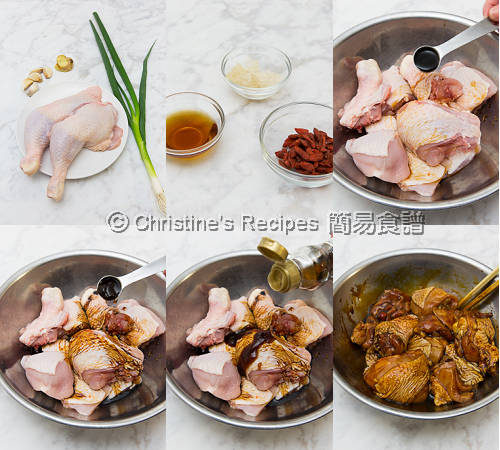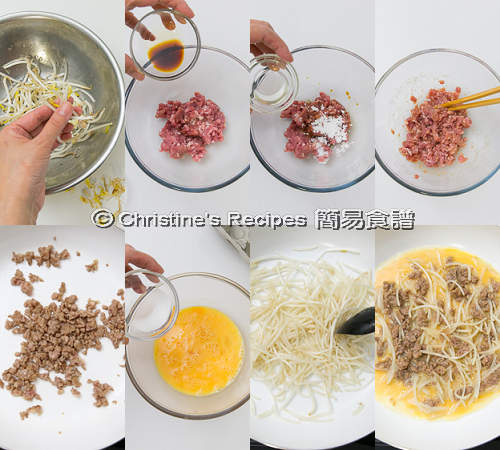Pineapple Fried Rice Recipe & Video Tutorial
hot-thai-kitchen.com
Many people seem surprised when I tell them that pineapple fried rice is a real Thai dish, not just a tourist-trap meal in beach-side resorts! It's a delicious and quick dish that only takes a few minutes on the stove (
watch me cook it in real time in the video!). But with so many components, it can be a bit tricky to get the balance right. Read on and I'll share my perfected recipe, important tips,
and how to make a pineapple bowl efficiently should you want to add a wow factor!
Ingredients
Here are the ingredients for Thai pineapple fried rice. It's mostly basic stuff you can find at regular grocery stores, but I've noted some important things to keep in mind!
- Fresh pineapple - with the emphasis on fresh. Canned pineapple is either going to be too sweet, which will clash in a savoury dish, or it will have a lackluster flavour. This is the difference between a great pineapple fried rice, and the mediocre one you get from takeout. It doesn't need to be a super sweet pineapple, but do wait for the skin to be yellow (as in the picture above) to make sure it's ripe and flavourful.
- Curry powder - my favourite is the Japanese S&B brand curry powder, which is available at most Japanese grocery stores or in the Japanese section of Asian stores. But whatever curry powder you have will work; my only rule is that you have to love how it smells!
- Plain or coconut rice - plain jasmine rice is the classic, but for a richer fried rice, use coconut rice. More on that below.
- Shrimp - a common protein pairing, but you can also substitute chicken or tofu, more details in the FAQ.
- Cashews - roasted and unsalted, but if you've got salted it's not a big deal. For extra crunchy and nutty cashews though roast them again to get them a little darker. More on this in my cashew chicken recipe.
- Tomatoes - I prefer roma tomatoes, which are the least watery.
- Fish sauce - want to learn more about fish sauce? See my ultimate guide to fish sauce.
- Soy sauce
- Sugar
- Salt
- White pepper
- Eggs
- Onions
- Green onions
How to Make Pineapple Fried Rice
Here's a bird's eye view of how to make pineapple fried rice, and how to make a pineapple bowl for serving if you want to make it fancy. I highly recommend you watch
the full video tutorial before starting to ensure success!
How to make a pineapple bowl efficiently
I've devised a method for making a pineapple bowl that will get you a perfect bowl
and yield ready-to-use pineapple pieces all in one fell swoop. No need to chop anything further, and no juicy mess on the cutting board!
- Cut the pineapple in half right through the green top, then use a sharp paring knife to score the pineapple all around the edges to create the bowl shape. Don't get to close to the edge or your bowl will be flimsy.
- Cut along the two sides of the core, angling your knife 45 degrees, going deep enough to make sure the two cuts meet.
- Remove the core; this is what will allow the pieces to be ready to use without further chopping.
- Score the pineapple into a grid, making each piece around 1-cm wide, then use a flat-ish spoon to scoop out the pieces. The bottom part is tricker to remove, but just hack it however you need to, as you will already have enough nice pieces for the fried rice by the time you get there.
For the Pineapple Fried Rice
- Sear the shrimp in a hot work until they are done. Remove from the pan.
- In the same pan, add the eggs and scramble until 90% cooked.
- Add the rice and onions and toss to mix.
- Add all dry spices and seasonings and toss until well distributed.
- Add the pineapple and toss until the pineapple is heated through, then let the rice toast while flipping a few times to develop some charring.
- Off heat, add the tomatoes, cashews and green onions.
- Toss briefly just until mixed.
- Serve on a plate or in the pineapple bowl and put the shrimp on top!
Pineapple Bowl - To Make or Not to Make
If you're serving for guests, you might wonder whether it's worth the effort to make the pineapple bowl. Listen, I used to be "anti-pineapple bowl" because it reminded me of Westernized, touristy pineapple fried rice that doesn't actually taste any good, and I always thought it was too much work. But I've since changed my stance on that for two major reasons:
- Using my method, it doesn't take any more time to make a pineapple bowl than to peel and cut a pineapple, and it's even less messy.
If you follow my tips, you'll have the bowl and all your pineapple pieces ready for the fried rice all in one go; no further chopping needed. And the mess will be contained in the pineapple, rather than the epic mess that usually results from peeling and chopping a pineapple.
- People are just wayyyy more excited about it.
You bring fried rice out in a pineapple bowl and it's going to instantly receive all sorts of "wow's" and "amazing's" from your guests, and they're going to take photos of it and probably post it to Instagram. You bring the same fried rice out on a plate and the response is gonna be: "Nice, let's eat." You KNOW I'm right!
Important tip for serving fried rice in a pineapple bowl
Be sure to dry the pineapple bowl thoroughly. If the rice is going to sit for any time at all before people are ready to eat, line the bottom with some lettuce or parchment paper to avoid the bottom part of the rice getting soggy. Basically unless hungry people are sitting and waiting for the rice to arrive, line the bottom.
Jazzing it up: Using Coconut Rice
Pineapple and coconut are a flavour match made in heaven as we all know (piña colada, anyone?). So when a
Patreon member told me that he used coconut rice for his pineapple fried rice, and topped it with shredded coconut, I was intrigued.
To my surprise, using coconut rice alone doesn't make the rice taste coconutty at all, but it makes the fried rice richer and a little more filling. But the unexpected bonus was the fact that it made making the fried rice much easier.
Making coconut rice is as simple as replacing half of the water with coconut milk, in a rice cooker or stove-top. If you have a pandan leaf handy, throw it in as well.
The fat in the coconut milk coats the grains, making them separate beautifully, and
I've never had an easier time getting fried rice seasoning to coat every grain. It's as simple as replacing half of the water with coconut milk when you cook rice, so no extra work added there.
If you want the coconut flavour to actually come through, I suggest getting some desiccated coconut, either shredded or flakes, and toasting them until nice and browned, then sprinkle it on top of your final dish.
Note: If you want to make coconut rice as a side dish to a meal, a little extra seasoning is needed. Check out my coconut rice recipe here.
Frequently Asked Questions
How can I make pineapple fried rice vegan?
You can substitute equal amounts of soy sauce for the fish sauce, and sub firm tofu for shrimp. I suggest marinating the tofu in some soy sauce, and then give it a quick fry to firm up the surfaces. If you don't eat eggs, you can omit and add a little more tofu.
How can I make pineapple fried rice in advance?
The cooking for pineapple fried rice is very quick (as shown in the video in real time), so you might consider measuring out all ingredients, chopping the vegetables, cooking off the protein, and combining the seasonings so that everything is ready to be thrown into the wok.
If you want to make the fried rice in advance you absolutely can, and it reheats well, but do not add the cashews, tomatoes and green onions. Toss those in after reheating, right before serving.
Can I use chicken instead of shrimp?
Yes, to substitute chicken, slice 8 oz (225 g) chicken breasts or thighs into 1 cm thick strips, then marinate in 2 tsp (10 ml) soy sauce, ¼ tsp (1.25 ml) sugar, and 1 Tbsp (15 ml) water for at least 15 minutes, stirring halfway in between. Cook it the same way as the shrimp in the recipe.
Before you start, be sure to watch the video tutorial to ensure success! I always include little tips and tricks not mentioned in the blog post. The video is in the recipe card below, but you can also
watch it on YouTube!
Thai Pineapple Fried Rice
A popular Thai dish bursting with flavours of curry powder, pops of fresh pineapple and crunchy cashews. Serve in a pineapple bowl for that extra "wow" factor. It's quick and easy, with the option to use coconut rice for extra richness.
Print Recipe Pin Recipe Share
Servings
2 generous servings
Ingredients
- ▢ 1 ¼ tsp curry powder, see note 1
- ▢ ½ tsp white pepper
- ▢ 1 ½ tsp sugar
- ▢ ¼ tsp table salt
- ▢ 2 tsp soy sauce
- ▢ 2 tsp fish sauce
- ▢ 1 ½ tsp shrimp paste in oil, optional, see note 2
- ▢ 3 Tbsp neutral oil
- ▢ 12 medium to large shrimp, or as many as you want, peeled and deveined, see note 3
- ▢ 2 eggs
- ▢ 375 grams cooked jasmine rice or coconut rice, recipe follows, see note 4
- ▢ ½ cup small diced onions
- ▢ 1 cup fresh pineapple, ½" x ½" x 1" pieces
- ▢ 2 Tbsp raisins, optional
- ▢ ½ cup roasted cashews, unsalted
- ▢ 2 green onions, chopped
- ▢ 1 roma tomato, 1-inch diced
- ▢ Pineapple bowl for serving, optional
- ▢ Cucumber slices for serving, optional
- ▢ Toasted shredded coconut for serving, optional, see note 5
Coconut Rice
- ▢ ¾ + ⅛ cup uncooked jasmine rice
- ▢ ½ cup water
- ▢ ½ cup coconut milk
Check Out Ingredients and Kitchen Tools I Use
Notes
- My preferred curry powder is the Japanese S&B brand, though any generic curry powder will also work as long as you like how it smells!
- Shrimp paste in oil is shrimp tomalley (fat) that has been cooked with some seasoning and herbs. See video for what the jar looks like. If using coconut rice, try to drain off most of the oil from the shrimp paste to avoid making the rice too oily.
- To sub chicken, slice 8 oz (225 g) chicken breast or thighs into 1 cm strips, then marinate in 2 tsp soy sauce, ¼ tsp sugar, and 1 Tbsp water for at least 15 minutes. Cook it the same way as the shrimp.
- Using coconut rice instead of plain rice in this dish adds a richness and makes the rice much easier to separate in the wok. The recipe for the coconut rice provided should yield just about the 375 g of cooked rice that you need.
- Using coconut rice adds richness, but it won't taste coconutty. If you want it to taste coconutty, top the fried rice with some toasted dried shredded coconut.
FULL VIDEO TUTORIAL
Thai Pineapple Fried Rice Recipe
0 seconds of 12 minutes, 31 seconds
Thai Turnip Cake Stir Fry Recipe (Kanom Pakkaad) ขนมผักกาด - Hot Thai Kitchen
All my recipes come with step-by-step video tutorials with extra tips not mentioned in the blog post, so make sure you watch the video to ensure success. If you enjoy them, consider subscribing to the YouTube Channel to not miss an episode. Thank you!
Subscribe to my YouTube Channel
Instructions
For the coconut rice (optional)
- Cook it as you would normal jasmine rice, in the rice cooker or stovetop. There's no need to mess with cooling it down because the coconut rice will spread so easily in the wok, so just fluff it and leave it at that. In fact, refrigerating coconut rice will make the rice stick together more as the coconut fat congeals.
¾ + ⅛ cup uncooked jasmine rice, ½ cup water, ½ cup coconut milk
For the Pineapple Fried Rice
- If making a pineapple bowl for serving, check out the video for a tutorial on how to make a pineapple bowl AND cut perfect pineapple pieces for the fried rice all in one go.
- Combine curry powder, white pepper, sugar and salt and stir to break up the curry powder. This will make it much easier to distribute the curry powder into the rice evenly.
1 ½ tsp sugar, 1 ¼ tsp curry powder, ½ tsp white pepper, ¼ tsp table salt
- Combine the soy sauce, fish sauce and shrimp paste in oil (if using) in a small bowl.
2 tsp soy sauce, 2 tsp fish sauce, 1 ½ tsp shrimp paste in oil
- In a wok or a large frying pan, heat 2 Tbsp of neutral oil until hot over high heat. Sear the shrimp without stirring until they're at least halfway done and slightly browned on the underside; flip and cook the other side just until done. Turn off the heat and remove the shrimp from the pan, leaving all the oil behind.
3 Tbsp neutral oil, 12 medium to large shrimp, or as many as you want
- Add more oil to the wok if needed, then add the eggs and scramble slightly. When the egg is half way cooked, add the rice and onions and toss to mix.
2 eggs, 375 grams cooked jasmine rice or coconut rice, ½ cup small diced onions
- Add the dry seasoning and the fish sauce + soy sauce and toss until the rice grains are evenly coated in the seasoning.
- Toss in the pineapple and raisins (if using) then allow the rice to sit undisturbed for 10-15 seconds to allow the rice to toast and brown slightly. Toss everything and repeat the toasting process a few more times.
1 cup fresh pineapple, 2 Tbsp raisins
- Turn off the heat and stir in the cashews, tomatoes and green onions. Serve on a plate or in a pineapple bowl for a "touristy" version, and add a garnish of cucumber slices and/or shredded coconut, if desired. Enjoy!
½ cup roasted cashews, 2 green onions, 1 roma tomato
Watch my videos AD-FREE and get bonus content on Patreon!
Tried this recipe? Share a pic!Tag
@hotthaikitchen on Instagram and Twitter!
:max_bytes(150000):strip_icc():format(webp)/__opt__aboutcom__coeus__resources__content_migration__serious_eats__seriouseats.com__images__2015__05__20150515-grilled-spicy-chicken-wings-soy-sauce-fish-sauce-shao-zhong-11-1500x1125-9b99dddc659743fe8b319607a38f537c.jpg)
:max_bytes(150000):strip_icc():format(webp)/__opt__aboutcom__coeus__resources__content_migration__serious_eats__seriouseats.com__recipes__images__2015__03__20150311-dumpling-dipping-sauces-vicky-wasik-4-1500x1125-454f86c0b921430c812f6982a980eb77.jpg)
:max_bytes(150000):strip_icc():format(webp)/__opt__aboutcom__coeus__resources__content_migration__serious_eats__seriouseats.com__2018__05__20150420-chicken-chile-verde-pressure-cooker-easy-10-1500x1125-3c92f88080d74982a632b48578407178.jpg)
:max_bytes(150000):strip_icc():format(webp)/__opt__aboutcom__coeus__resources__content_migration__serious_eats__seriouseats.com__images__2014__07__20140703-Grain-Salads-Jennifer-Olvera-lo-res-1500x1125-3048cca3b07a437b856a47f97572c20c.jpg)
:max_bytes(150000):strip_icc():format(webp)/__opt__aboutcom__coeus__resources__content_migration__serious_eats__seriouseats.com__recipes__images__2016__02__20160221-fried-rice-crab-thai-recipe-kenji-primary-1500x1125-d60f8bfa0a2c4b4a9973f2d5b2e26301.jpg)
:max_bytes(150000):strip_icc():format(webp)/__opt__aboutcom__coeus__resources__content_migration__serious_eats__seriouseats.com__recipes__images__2015__05__20150523-bloody-mary-variations-vicky-wasik-5-1500x1125-ef4cc849182844a6b410c567709030a0.jpg)











